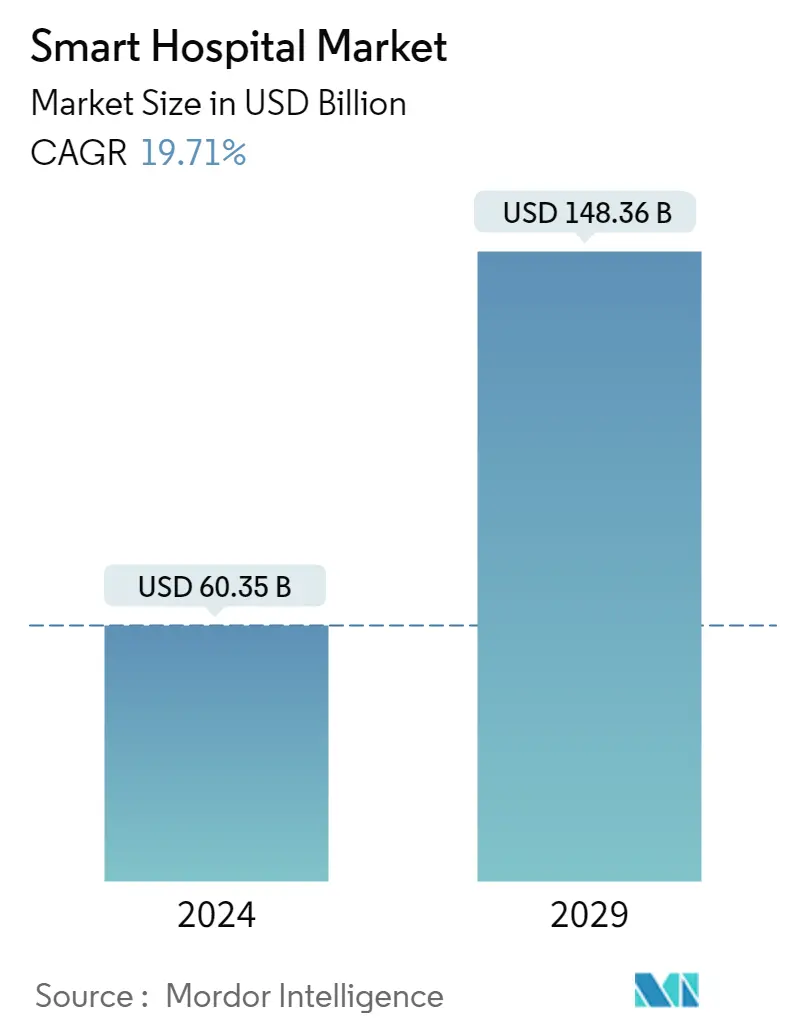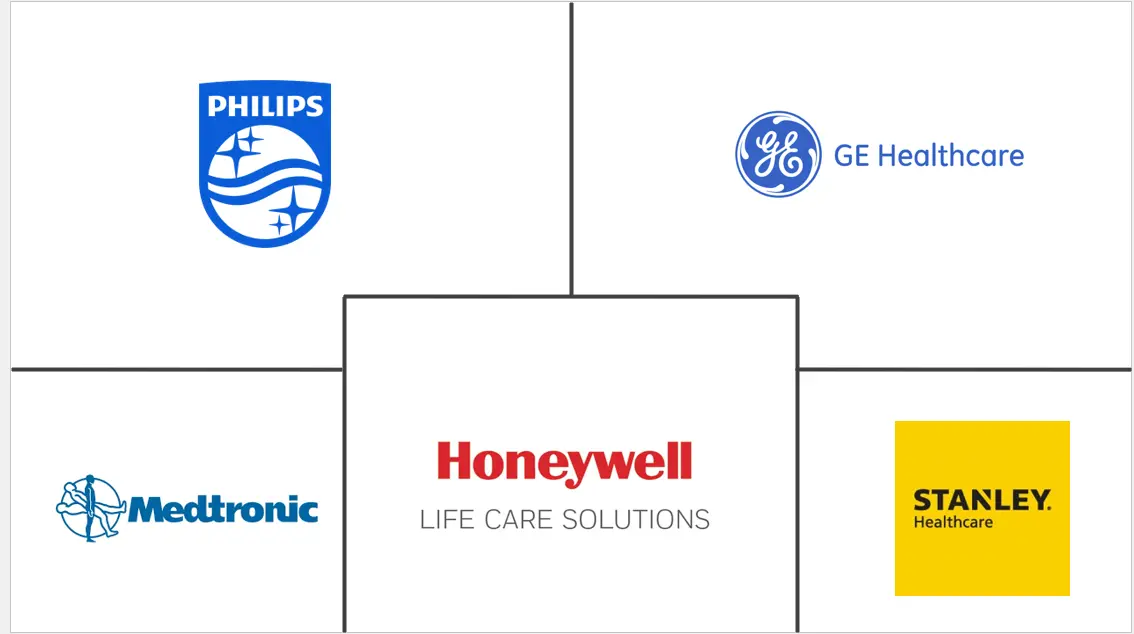Market Size of Smart Hospital Industry

| Study Period | 2019 - 2029 |
| Market Size (2024) | USD 60.35 Billion |
| Market Size (2029) | USD 148.36 Billion |
| CAGR (2024 - 2029) | 19.71 % |
| Fastest Growing Market | Asia Pacific |
| Largest Market | Europe |
Major Players
*Disclaimer: Major Players sorted in no particular order |
Need a report that reflects how COVID-19 has impacted this market and its growth?
Smart Hospital Market Analysis
The Smart Hospital Market size is estimated at USD 60.35 billion in 2024, and is expected to reach USD 148.36 billion by 2029, growing at a CAGR of 19.71% during the forecast period (2024-2029).
The rising trend of the Internet of Things (IoT) continues to transform healthcare delivery services at an unprecedented pace. Connected medical devices are increasing patient safety and efficiency. When such technologies apply to the complete healthcare organization ecosystem, it becomes a "Smart Hospital."
- Due to the high investments involved, hospitals worldwide have been reluctant to adopt these technologies and practices. However, with the diminishing cost of technology and in the light of fast-developing use cases that show the importance of digital connectivity solutions, hospitals today are being forced to embrace them. These technological changes will also benefit hospitals by digitizing personnel management, asset tracking, and scheduling for better operational efficiency.
- Owing to the rise in the aging population and long-term chronic disease conditions in many regions, there is an increasing demand for remote patient monitoring solutions. This is a significant factor impacting the market's growth. There is constant pressure on hospital administrators to lower costs while continuing to improve the standard of patient care. Hospitals are turning to wireless technologies to operate more efficiently, support patient care, and improve their experiences.
- For instance, to better understand and enhance the workflow of nursing staff, hospitals are equipping nurse ID badges with an RFID tag that works with the hospital's Wi-Fi network. These tags track the movement of the nurses throughout their shifts. The data is captured and analyzed, providing insights to the hospitals on how to upgrade their procedures.
- The wireless RFID technology also allows hospitals to track the real-time location of critical equipment and the condition of the equipment. By adopting this wireless technology, the Shands hospital in Florida experienced a 98.8% reduction in the hours spent searching for missing items.
- The COVID-19 pandemic had pushed hospitals beyond their capacity. Yet, the response to the crisis also encouraged innovation. Progressing digital transition was sped up by the requirement to maintain social distance and make the most meaningful use of overworked workers.
